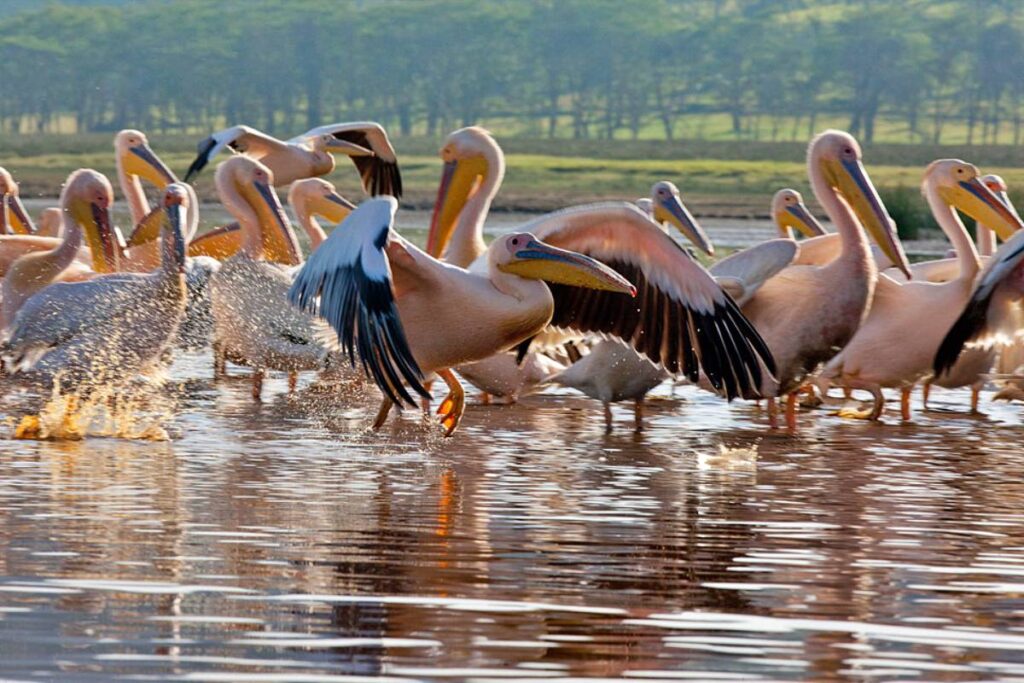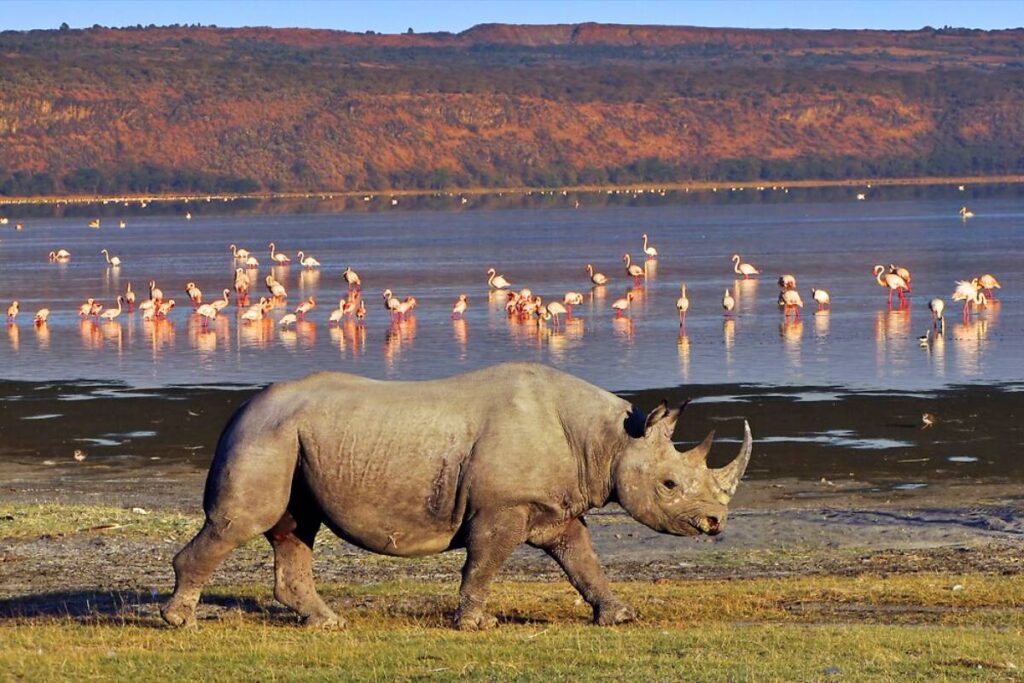
Lake Nakuru is an alkaline lake based in the Great Rift Valley. Flamingoes and lesser animals are in high numbers, and the waters turn pink. The lake is prolific in birding, and the water levels depend on the rainfall. There is a cross to 400 endemic bird species. These include; the herons, sooty falcon, splendid blue-eared starlings, cormorants, pelicans, black-tailed godwit, Abyssinian thrush, arrow marked babbler, cormorants, among others. You can spot the little grebes, black-winged stilts, white-winged black terns, cormorants, pelicans, ducks, avocets, and several migrant waders during the migratory period flying from Europe. Lake Nakuru is a year-round destination. The fence prevents animals from migrating to other areas.
Waterbuck, white and black rhinos, hippo, baboons, warthogs, monkeys, impala, Cape buffalo, zebra, African wild dog, elands, and lions thrive nearby the park. Nakuru hosts the rare Rothschild’s giraffe and numerous leopards. The alluring forest and thorny acacia trees provide shelter to the animals during sunny days. Lake Nakuru is an excellent wildlife haven. The name of this unique destination means the ‘dusty place.’ You can go hiking at the Makalia waterfall located in the southern region of the lake. Visitors can also spot diverse wildlife as they quench their thirst. The baboon cliff is a destination that enables tourists to have exceptional aerial views of Lake Nakuru NP. There are several campsites and luxury privately owned lodges guests can reside in.










